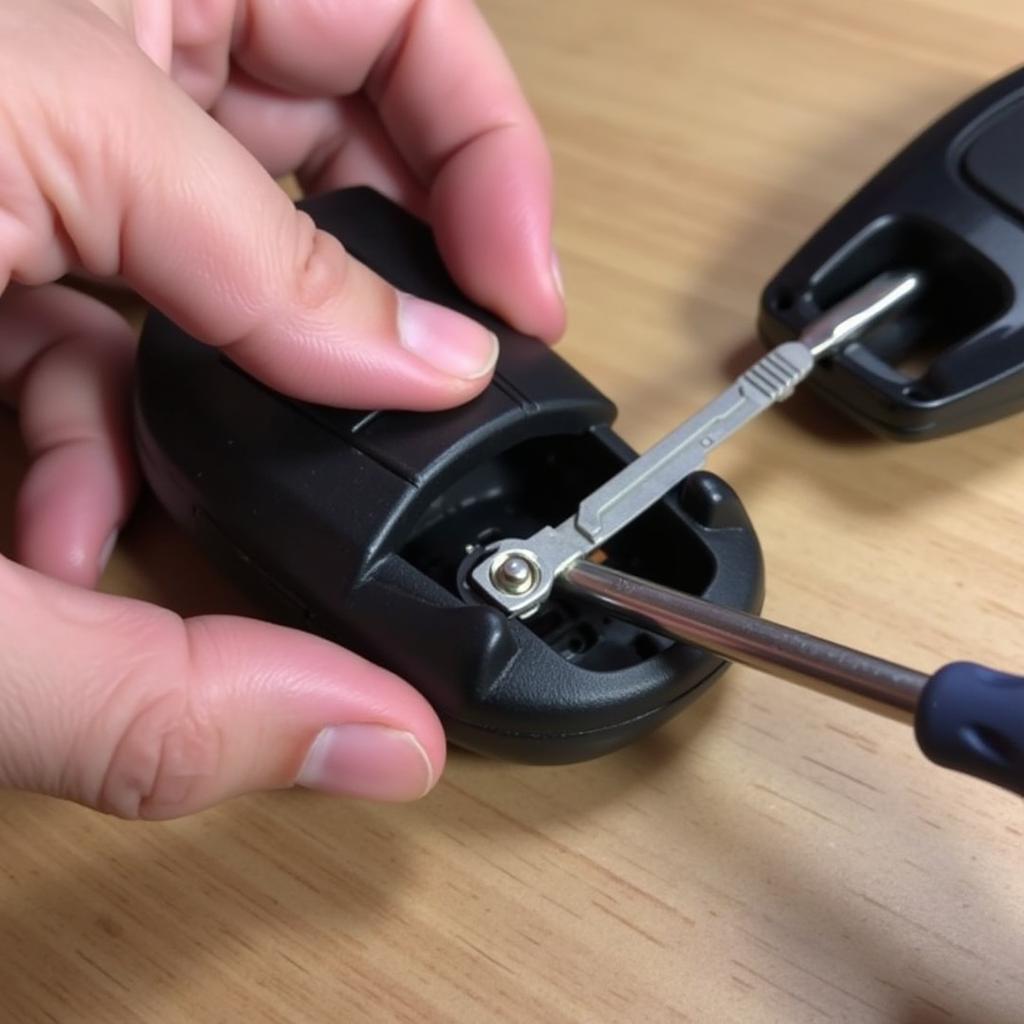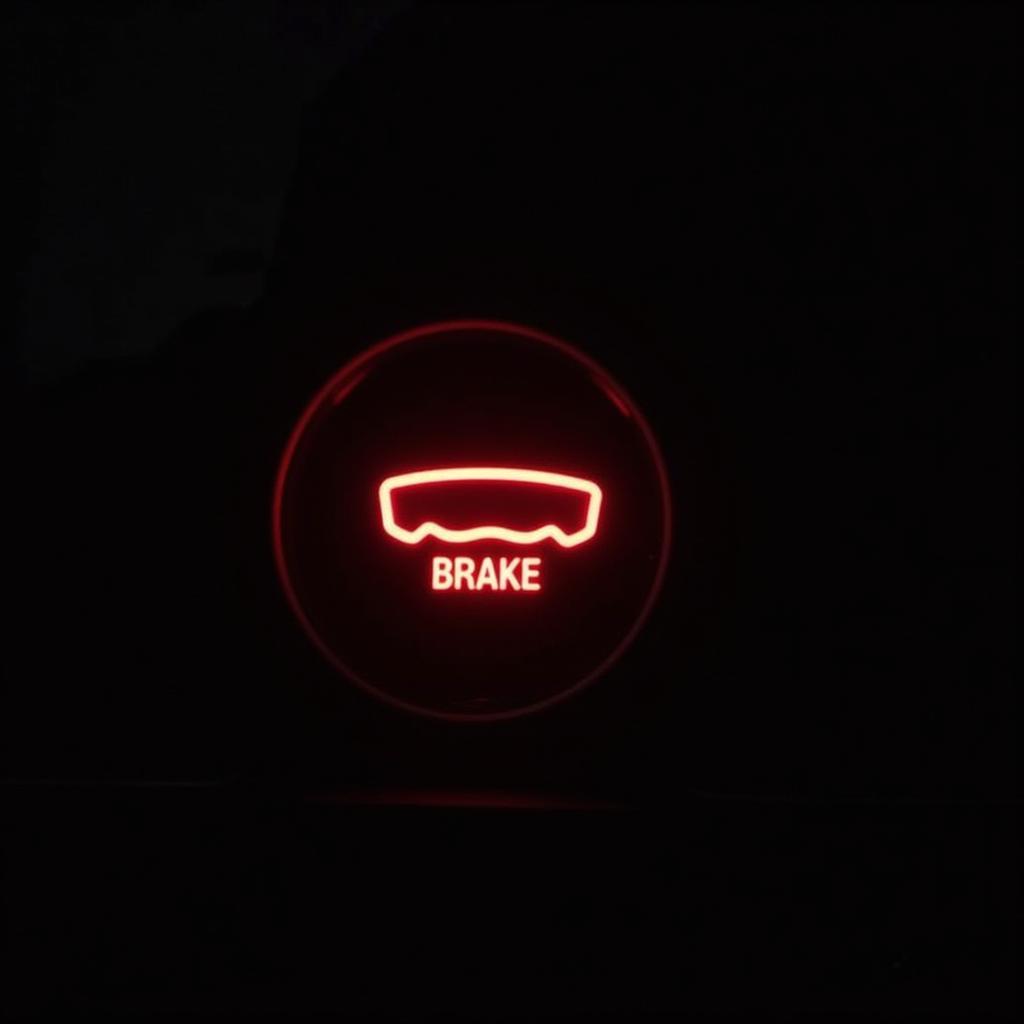The brake pressure warning switch is a crucial safety component in your 1977 Dodge. This small but vital part warns you of potential issues with your braking system. Understanding its purpose, common problems, and troubleshooting steps is essential for safe driving.
What is the Brake Pressure Warning Switch?
The brake pressure warning switch is a sensor that monitors the hydraulic pressure in your brake lines. If the pressure drops below a certain level, the switch activates, illuminating a warning light on your dashboard. This alert signifies a potential problem with your brakes, prompting you to address the issue promptly.
Why is the Brake Pressure Warning Light On?
Several factors can cause your brake pressure warning light to illuminate. Here are some common culprits:
- Low Brake Fluid: The most frequent reason for a lit brake pressure warning light is simply low brake fluid. When the fluid level drops, the pressure in the brake lines decreases, triggering the switch.
- Leaking Brake Lines: Damaged or corroded brake lines can lead to fluid leaks, causing a drop in pressure and activating the warning light.
- Faulty Master Cylinder: The master cylinder is the heart of your brake system. A faulty master cylinder can leak fluid, leading to a loss of pressure and activating the warning light.
- Stuck Brake Caliper: A seized caliper can cause the brake pads to remain pressed against the rotor, leading to excessive wear and a decrease in brake fluid, triggering the warning light.
- Faulty Brake Pressure Warning Switch: While less common, the switch itself could malfunction, causing it to activate even if the brake pressure is normal.
Symptoms of a Bad Brake Pressure Warning Switch
Besides the illuminated warning light, you might experience other symptoms if the brake pressure warning switch is faulty:
- Erratic Warning Light: The light may flicker or turn on intermittently, even when there’s no actual problem with your brakes.
- Delayed Activation: The warning light might not come on immediately after a significant drop in brake pressure, potentially delaying your response to a serious issue.
- False Warnings: The switch could activate falsely, leading to unnecessary anxiety and potentially unnecessary repairs.
Troubleshooting Steps:
- Check the Brake Fluid Level: The first step is to check the brake fluid level in the reservoir. If the fluid is low, add brake fluid of the correct type to the reservoir. Be sure to use the recommended brake fluid for your 1977 Dodge.
- Inspect Brake Lines: Examine the brake lines for any signs of leaks, cracks, or corrosion. If you find any damage, repair or replace the affected lines.
- Check the Master Cylinder: Inspect the master cylinder for leaks or signs of damage. If you find any problems, the master cylinder might need to be replaced.
- Inspect Brake Calipers: Check the brake calipers for any signs of sticking or seizing. If you find a stuck caliper, it needs to be serviced or replaced.
- Test the Brake Pressure Warning Switch: If the previous steps haven’t addressed the problem, the brake pressure warning switch itself might be faulty. You can test the switch with a multimeter to verify its functionality.
Expert Insights:
“The brake pressure warning switch is a vital safety feature that should never be ignored,” says John Smith, a certified automotive technician with over 20 years of experience. “Even if the warning light seems intermittent, it’s essential to address the underlying issue promptly to avoid more serious problems and potential accidents.”
“Always use high-quality brake fluid and perform regular brake inspections,” advises Mary Jones, an automotive expert and author. “These preventative measures can help prevent brake problems and ensure your safety on the road.”
FAQ
Q: Can I drive my 1977 Dodge with the brake pressure warning light on?
A: While it might seem tempting to ignore a lit warning light, it’s never safe to drive with a brake pressure warning light illuminated. The issue could be a sign of a serious brake system problem that could lead to a loss of braking power.
Q: Can I replace the brake pressure warning switch myself?
A: Replacing the brake pressure warning switch on a 1977 Dodge isn’t a particularly difficult job, but it requires some basic automotive knowledge and tools. If you’re not comfortable working on your vehicle’s brakes, it’s best to take it to a qualified mechanic.
Q: How often should I check my brake fluid level?
A: It’s good practice to check your brake fluid level at least once a month, or before any long road trips. This can help you catch any potential leaks or low fluid levels before they become a major issue.
Q: How do I know what type of brake fluid to use?
A: Consult your 1977 Dodge owner’s manual or a reliable automotive parts store for information on the correct type of brake fluid to use for your vehicle.
Q: How can I prevent brake problems in my 1977 Dodge?
A: Regular brake inspections, using high-quality brake fluid, and maintaining the proper brake fluid level are crucial for preventing brake problems. Avoid harsh braking and ensure the brake system is properly serviced according to the recommended intervals.
By understanding the brake pressure warning switch, its potential problems, and troubleshooting steps, you can keep your 1977 Dodge safe and reliable on the road. Remember, a well-maintained braking system is essential for safe driving.


